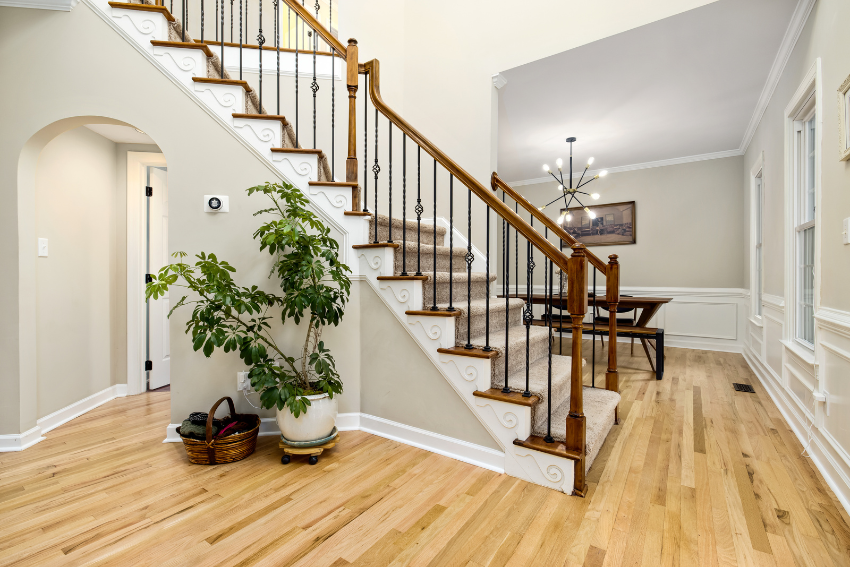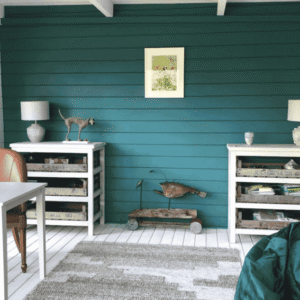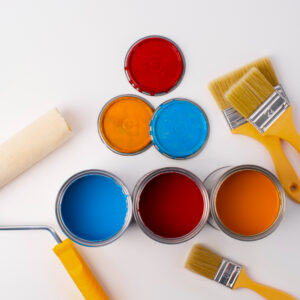Stairways do not only provide a link between the levels. They determine the appearance and ambience of your space. The stairway tiles may affect safety, the life span, and your own style whether they are used as an entrance into your house or are located in the house. Given such a variety of options, whether smooth and gritty anti-slip finish or sophisticated stone or ceramic aesthetic, it’s important to choose right tiles for stairs to carry out a balance between the functionality and design.

This guide exists to inform you home owners about factors you are supposed to consider in selecting right tiles for stairs that should be used on your stairs such as material, weather protection, grip and once you know the factors, you may be able to make best decisions to guide your home choices over a long run.
Why Choose Tiles for Stairs Anyways?
People use stairs every day, so it is worth buying something that is durable. Tiles for stairs best to use as they are strong and are easily cleaned. They do not get easily worn just like what is observed in the case of wood or carpet despite heavy use.
Safety is also of importance. Certain tiles are provided with textured surfaces thus inhibiting slippage. This comes in handy especially when you are having small children or older people of the family at home. However, not every tile is equal, that is why, it is nice to find those with good grip, and that have sufficient thickness. On stairways good-quality porcelain or vitrified tiles or stone tiles are chosen since they are not only fashionable, but durable as well.
10 Tips to Choose Right Tiles for Stairs
This ultimate guide discusses the most crucial aspects that you need to pay attention to when it comes to selecting tiles on stairs so that you could make the informed choice.
Prioritize Safety with Slip-Resistant Tiles
When choosing tiles for stairs, safety should be put first since slips and falls are the most prevalent incursion. Considering the slip-resistant tiles, to reduce the risks, prefer to concentrate on highly slip-resistance tiles.
- Slip-Resistance Ratings: Find tiles with slip-resistance score of R10 or higher (according to DIN 51130, which is a common standard used in flooring) or with such coefficient of Friction (COF) rating of 0.8 or higher. The ratings represent improved traction particularly in wet roads. If you have a home with children present or a home with older people present you might want to look at R11 or better to provide a safer home.
- Surface Texture: Use tiles, which are either textured, matte or honed, have a superior grip in comparison to the glossy and polished tiles. Ceramic or porcelain tiles with anti-slippery paint or stone natural surface such as slate are perfect.
- Specialized Features: There are tiles specially made that fit stairs which has grooves or designs on top of it because of the better grip. Also, a possibility exists to add stair nosing (Section 5) which provides additional traction at the top of each step.
To be on the safer side, always slip test a tile by stepping on a sample preferably when wet, this is a good indicator that the type of tile is best suited to your safety requirements.
Select Durable Materials for Longevity
Stairs are subject to maximum traffic and therefore, the tiles applied must be hard to wear out with time. Their popularity according to their suitability to the stairs looks like this:
- Porcelain Tiles: These ones are the most durable, because of their low water absorption rate (below 0.5 %) and high scratches, stains and Impact resistance. Porcelain would be great on any indoor or outdoor staircase and there are many finishes available, such as wood-look or stone-look porcelain.
- Ceramic Tiles: Ceramic tiles are similar to porcelain tiles, but are weaker. This makes it ideal to be used on indoor stairs that do not have much traffic. They are cheaper yet they have a higher water absorption rate and can chip or crack with a lot of use.
- Natural Stone: Granite, slate or marble are some of the available options that provide durability as well as luxurious appearance. Slate and granite are even more durable whereas marble is softer and more susceptible to scratches, hence, special attention. Natural stone usually requires a periodic sealing to issue stains and moisture damages.
- Terracotta: This homely choice is not so durable yet can be used in low-traffic stair carpets with proficient sealing. It is most preferable indoors because it is prone to moisture.
Harder stones such as limestone or travertine should not be used in stairs because they are easily worn out when condensed. Always want to know the rating of the tile, which is often referred to as the POORCAN (porcelain enamel institute rating) that is usually used to rate the resistance of wear. A PEI rating of 4 or 5 is best suited on areas of a lot of foot traffic such as stairs.
Choose the Right Tile Size and Shape
The tiles used will have a further effect in determining the appearance and fitment of your staircase with regards to its size and shape. Take the following into consideration:
- Large Tiles: Tiles that are 12 X 24 inches and up make the place look modern and smooth with less grouting lines to appear like an entire piece. These, however, might have to be cut more to suit the size of stair treads (average is 10-12 inches deep) and risers (average is 6-8 inches high) and this can add to the cost of installation.
- Small Tiles or Mosaics: Smaller tiles (e.g. 2×2 inches) or mosaic sheets are available, therefore they are suitable when the staircase under consideration is narrow or curved and hence easier to cut and fit. They, however, end up leaving more grout lines which can accumulate dirt and also take long to wash.
- Standard Sizes: 6 x 12 or 8 x 8 inch dominate in tiles of the classic balance between the aesthetic and practical side, which suit most average stair sizes having to cut little to have it fit there.
It is advisable to make sure that the tile size matches the sizes of your staircase so as to not waste most of it nor end up with ugly cuts. To give a structured appearance one might think of using one type of tile to cover both treads and risers or using matching tiles (e.g. a pattern on risers and solid on treads).
Pay Attention to Edge Details and Nosing
Nosings used on the edges of stair tread are very essential in terms of safety and beauty. The right treatment to the edge will stop chipping, provide grip and offer the staircase a finishing effect.
- Bullnose Tiles: These are rounded edge tiles which give a smooth and dashing transition at the edge of tread. They are abundantly obtainable in ceramic and porcelain and presently famous in indoor staircases.
- Stair-Nosing Tiles: There are also specialized stair-nosing tiles some of which have incorporated ridges (or anti-slip strips) to provide traction. These are best suited in locations that are high in traffic or outdoors.
- Metal or PVC Nosing Strips: To increase the durability and safety, you may also deem it prudent to lay on the metal nosing strips or PVC nosing strips on top of the tile edges. The strips prevent the tile to chip and offer a visual cue of contrast to be more visible, especially during low-light settings.
- Custom Cuts: If you cannot find bullnose tiles, a professional installer can cut the tiles at a 45-degree angle to make a clean of the tile edge, but this makes the job expensive.
Select nosing that blends well with your tile material and color and choose safety as one of the priorities. In case of the outdoor stairs, make sure that the nosing material is weatherproof.
Align Tiles with Your Home’s Aesthetic
Your stairs are a design feature and thus the tiles ought to blend with the whole style of your home. These are amongst some of the aesthetic considerations:
- Modern/Contemporary: Use large-format porcelain tiles that are in a neutral color such as gray, white or black with a matte or semi-gloss finish. There is a sleek touch given by minimalist designs or tiles that look like concrete or metal.
- Traditional/Classic: An ageless appearance is achieved by using natural stone such as marble or granite in natural warm or neutral colors. Instead, to go classic with elegance, one can use a hint of patterned ceramics or wood-look finish on ceramic tiles.
- Rustic/Farmhouse: Terracotta or slate tiles add a natural color such as red, brown or charcoal and add warmth and texture. Porcelain tiles that resemble wood may also be used to create a rustic feel in a home without the efforts of maintaining real wood.
- Eclectic/Vintage: Encaustic or patterned cement tiles with bold geometric or floral designs add personality, especially on risers. Pair with solid treads to balance the look.
- Transitional: Cement tiles are out dated, patterned and encaustic, strikingly geometric or flower like, and exude personality especially on risers. To neutralize the appearance, combine with hard treads.
Stair tiles should be coordinated with the nearby flooring colors or walls to facilitate a similar flow. A good example is the flooring of your foyer is hardwood and the stair approach; then you may want to use wood-look that will make the difference to be continuous. Get samples and see the appearance of the tiles in the lighting you will be using at home.
Evaluate Maintenance and Cleaning Needs
They may also mean stairs where such things as dirt, dust and scuffs can gather, so easy-to-clean tiles are a better choice.
- Porcelain and Glazed Ceramic: This is the easiest to clean and all you need is a regular sweeping followed by occasional mopping using mild detergent. They have stain resistant non-porous surfaces.
- Natural Stone: A reasonably low maintenance is granite and slate whereas marble and other porous types of natural stone require regular sealing (every 6-12 months) in order to prevent staining. Avoid the use of abrasive hand washing liquid or scrub to avert destruction.
- Textured or Patterned Tiles: Although they hide dirt, the textures can trap the dust thus they need more cleaning. Design tiles will work to disguise small spots but see to it that you check on grout maintenance.
- Grout Considerations: The more the grout lines (such as smaller tiles) the more cleaning. Stains can be camouflaged along the grout with dark or tinted grout and it is advisable to seal it to be durable. Epoxy: Epoxy grout is stain-resistant, and high quality, however, more expensive.
In the case of busy families, then focus on something that is less to maintain such as porcelain with very small grout lines. Darker tiles or tiles with mottled design are more effective in hiding dirt because smooth lights do not hide scratches and smudges, which are clearly visible.
Factor in Installation and Budget
The choice of tiles accompanies installation, and it should be accurate so that it is safe and produces an impeccable finish. This is what you will want to bear in mind:
- Tile Costs: Prices vary widely:
- Ceramic Tiles: $1-$6 per square foot.
- Porcelain Tiles: $3-$15 per square foot.
- Natural Stone: $5-$30 per square foot (e.g., granite, slate, or marble).
- Encaustic/Patterned Tiles: $10-$30 per square foot.
- Installation Costs: Stair installation by a professional generally costs between $7 and 20 dollars per square foot depending on the location of installation, the complexity of a staircase (i.e. whether curved or a spiral stair), and the type of edge treatment. Nosing work and custom cuts are going to be more expensive.
- Additional Costs: Budget for:
- Nosing strips: $5-$20 per linear foot.
- Grout and adhesives: $50-$150 for an average staircase.
- Sealers: $20-$100 for natural stone.
- **Removal of old flooring (if applicable): $2-$5 per square foot.
- Total Estimate: Materials and labor costs should be anywhere between $500-3,500 on a regular 10-15 linear feet staircase and they depend on the type and complexity of the tile. Compare prices so you can get quotes of two or more licensed contractors.
- DIY vs. Professional: DIY tiling can cut the costs, but stairs need an accurate cut, leveling to arrange up to safety requirements. There is nothing wrong with hiring professional installer unless you are very experienced you may need to hire a professional to save some costly mistakes or safety problems.
Test Samples and Visualize the Outcome
To be sure of not getting disappointed after purchasing a tile, use the following steps:
- Request Samples: Ask for samples of your favorite tiles (the majority of retailers provide some samples free or at a low cost). Put them on your stairs to evaluate color, texture and slip resistance in both natural and artificial light.
- Test Durability: Walk on the samples to get the assurance of comfort and traction. As far as possible test them when wet to represent spillage or outdoor use.
- Visualize the Design: Design software is available to create a mock up of how the tiles will appear on your staircase or talk to your installer. Evaluate the way the tread and riser tiles are used and whether the nosing is in line with the rest of the design.
- Check Consistency: With natural stone more than one sample is important in order to learn about color and veining variation as no tiles are exactly the same.
Samples will prevent making expensive mistakes, and it will make sure that the tiles could fulfill both aesthetic and functional related needs.
Address Indoor vs. Outdoor Stairs
In the case that your stairs are outside, then there are other considerations:
- Weather Resistance: Pick tiles, which are weather resistant (e.g., porcelain or granite) to stand-up against freezing temperature. The usage of ceramic or unsealed stone should be avoided because they can crack due to cold weather or wet weather.
- UV Resistance: Make sure that that the tile color will not change into the sun rays. UV-stable finishes are all porcelain and majority of contemporary finishes.
- Drainage: Outdoors stair applications must be well sloped and have good drainage to avoid water ponds that tend to make tiles slippery.
- Higher Slip Resistance: Go with the smooth outlines of R11 or R12 tiles to take care of rain or snow.
In case of indoor stairs, pay more attention to design and comfort, but, nevertheless, make sure that the stairs are also slip resistant (e.g., in zones that are likely to cause spills like kitchen areas).
Consult Building Codes and Standards
Stairways can be subject to local building codes with such requirements as:
- Tread and Riser Dimensions: The dimensions of the tile must be within code compliant limits (i.e. tread depth must be at least 10 inches and the riser ceiling must not be higher than 7.75 inches in most U.S. jurisdictions).
- Nosing Requirements: Codes may require nosing to extend 0.75-1.25 inches beyond the tread for safety.
- Slip Resistance: In some locales, there is a required minimum slip-resistance rating of a building that would be relevant to the home.
It is a good idea to check with your local building authority or contractor to make sure you are up to code particularly with brand new or renovated staircases.
Is It Worth Investing in Good Stair Tiles?
Good quality tiles on stairs are a good investment since they will last longer and they should be better over time. The prices will differ according to the material, finish and brand of your choice.
As a matter of example, premium collections tend to be successful and super stylish. It may be expensive to purchase at the time but you pay what you get.
The temptation to buy cheaper stairs is understandable but stairs are prone to a lot of wear and tear. When you buy quality tiles, it will save on your part; time and finances needed to fix or replace the tiles in the future.
Conclusion
Your stairs need not be only practical. They may as well be a design element. Choosing the right tiles for stairs helps in the incorporation of safety, durability and design in a single area. There is more variety in types that now exist like texture, finish, and the cool look of the tile you use now than ever before to buy something that will fit in your home as well as fits in your daily needs.
Whether you want a mild or a vibrant finish, the staircase can enhance your living place both in terms of fashion and value. You should take your time in searching options and chances are high that you may find the right tiles for stairs you need in order to make your stairs safe as well as beautiful.






